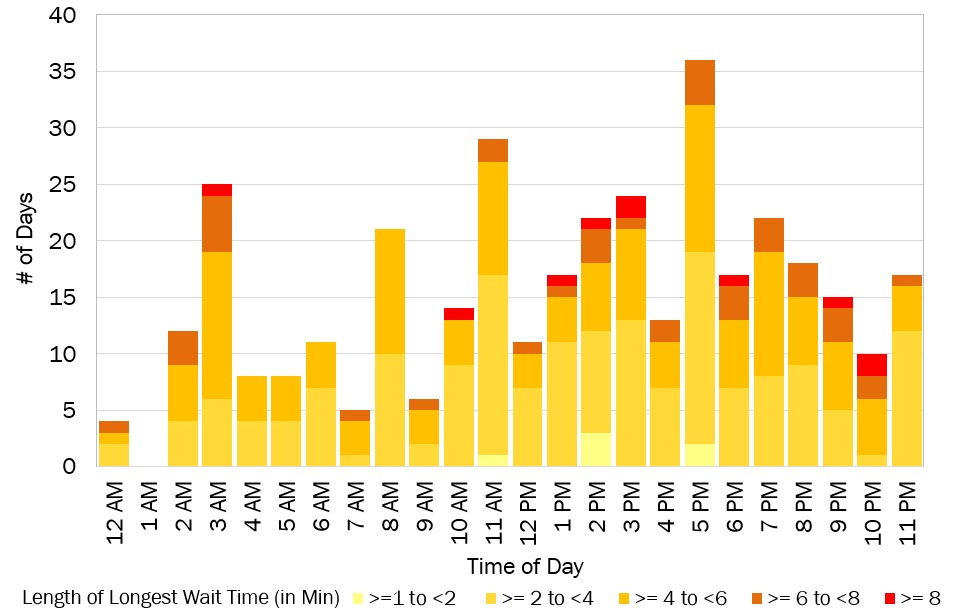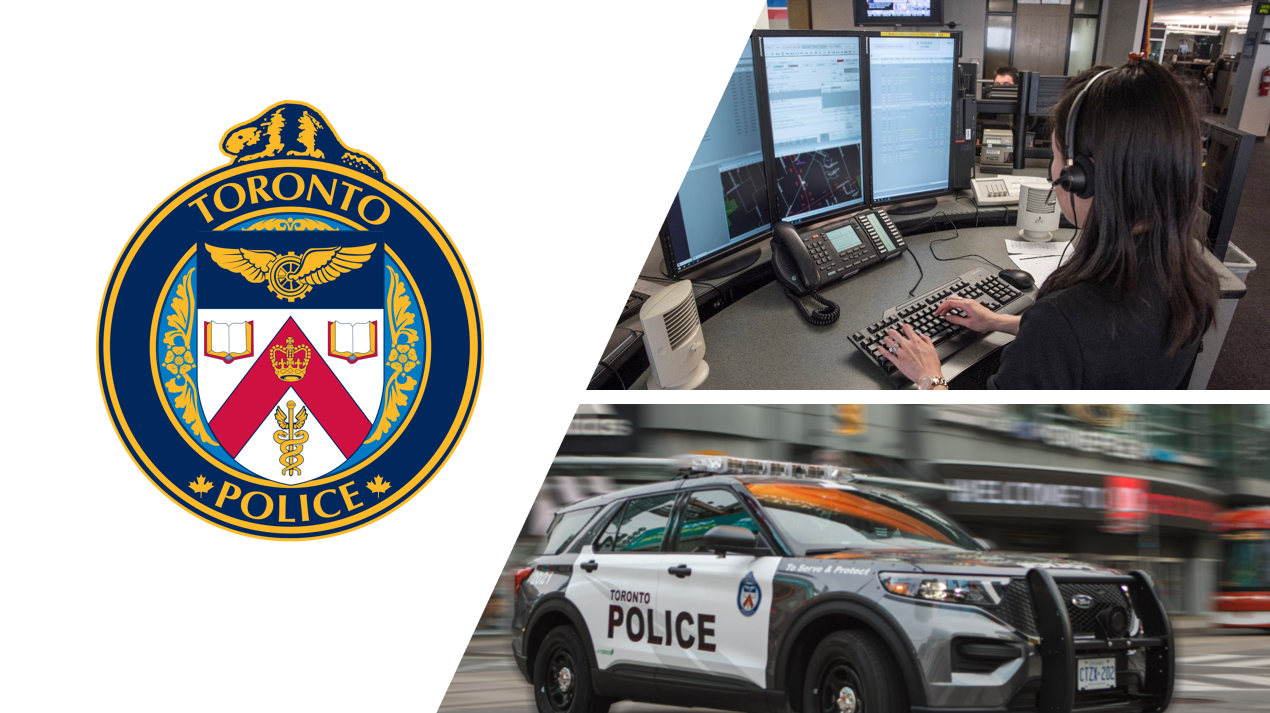PDF version of the ‘At A Glance’ for this report
Why This Audit Matters
Toronto Police Service (TPS) operates the 9-1-1 Public Safety Answering Point (PSAP) for the City. The PSAP is the first point of contact for those dialing 9-1-1 to receive emergency assistance from fire, ambulance, and police. It plays a crucial role in ensuring the public’s safety and security. It also drives the first level of front-line police resourcing. Operators must answer calls quickly and direct resources appropriately so that those in need will get the appropriate emergency assistance they need.
By The Numbers
- 1.8M: average yearly calls for service received 2018 to 2021 (1.1M 9-1-1 calls; 0.7 M calls to police non-emergency line)
- 5,000: average calls received per day (almost 3,000 for 9-1-1 calls)
- 57%: proportion of calls to 9-1-1 not for emergency assistance (in addition to calls received on police non-emergency line), 1/3 of which were for abandoned, hang-ups and pocket dial calls

- 2 days in 2018 vs.10 days in 2021: days meeting the 9-1-1 service level standard (answer 90% of calls within 15s)
- 7s (non-peak period) vs. 28s (highest peak period 2:45 to 9:30 pm): average 9-1-1 call wait times in 2021
- 13,260 and 424: 9-1-1 calls that waited more than 1 min and more than 4 min in 2021
- 3 days: days with no staff absences between 2018 and 2021
- $1.6M: average yearly overtime cost
- $28.8M: potential annual 9-1-1 levy to support NG9-1-1 and PSAP operations
- 10 to 11 min: longest wait time for some calls on a few days from 2018-2021
- 3 to 4 min: most often longest daily wait time for a 9-1-1 call for 2018, 2019, and 2021 (2 to 3 min for 2020)
Breakdown on the Timeslot of the Day in which the Longest 9-1-1 Wait Happened, 2018

What We Found
A – Answering Calls – 9-1-1 PSAP Operations
- PSAP operators have a difficult and stressful job and must make quick decisions that could affect people’s safety. It takes about 1.5 years to recruit, hire, and train a 9-1-1 PSAP operator.
- TPS does not have complete, accurate, and readily available data, information and analysis to support effective workforce management, regular performance monitoring, and inform decision-making.
- The lack of data also limited some of our audit work and resulted in a scope limitation in the audit.
- PSAP operations should ensure more available and/or deployable staff are in place, particularly for peak periods to improve call answering times and factoring in staff availability.
- Strategies are needed to better support PSAP operators by managing and reducing daily absences, Injured on Duty, overtime, and to improve the retention, health, and well-being of the PSAP operators.
B – Assigning Call Event Types and Priority Levels
- In over 85% of our statistically valid sample, call takers appropriately assessed the event type and priority rating of the reported event. Given that 9-1-1 calls often involve people’s lives or safety, it is important to further improve this.
- Better supports (technological changes, improved clarity in operational manual, and additional training) should be provided for communications operators.
C – Dispatch and Response Times
- TPS’s police response time measurement does not include all components, such as the time to answer the 9-1-1 call. TPS should update its response time methodology to track and include response from the time a call is received until when the needed assistance arrives on scene.
- Dispatch time for a call event can be long but is affected by the police officers’ availability. A dispatcher cannot dispatch a call for service until an officer is available. Police officers need to advise dispatchers of arrival and clearance times of call events consistently so that dispatchers are aware of when an officer unit is available for the next call for service.
D – New Technology, 9-1-1 Levies, and Other Opportunities
- Unlike most provinces, Ontario’s telecommunication service providers do not charge and remit a 9-1-1 levy to the PSAP.
- This 9-1-1 monthly levy (e.g., other provinces charge between $0.43 and $1.88 a month) is needed to modernize the 9-1-1 PSAP. The potential funding from this levy could assist with implementing the mandated Next Generation 9-1-1 requirements, and with implementing some of the recommendations in this report, including modernized information systems and better data needed to manage the PSAP operations.
E – Community Education and Awareness
- More public education and awareness is also needed to help reduce the unnecessary or avoidable call volume to 9-1-1, by providing callers with better clarity of when to use the 9-1-1 emergency line and the options of TPS’s non-emergency line (416-808-2222) or alternative non-police numbers and resources.
How Recommendations Will Benefit The City
Implementing the 26 recommendations in our report will strengthen the 9-1-1 PSAP operations to improve its ability to keep Toronto safe.
